In our Dell OptiPlex 7070 Micro guide and review we see what this system offers in the ~1L system category. We have now published guides and reviews on several systems from major vendors and previously published our OptiPlex 3070 Micro review. When we did that review, we wanted to see what the higher-end version with support for better connectivity and features such as Intel vPro offers. What we found in the Dell OptiPlex 7070 Micro is a solution that is perhaps the easiest to service and performed well. We even found an undocumented feature with support for twice the amount of RAM that Dell officially lists. Let us get into the Project TinyMiniMicro guide.
Project TinyMiniMicro Dell OptiPlex 7070 Micro Review Video
As part of this project, we are releasing videos with some additional looks at the systems and some more candid thoughts. Here is the video for this:
This article will have a bit more since there are some facts and concepts easier to convey using text rather than video. You can also see the full video series using this YouTube playlist.
Project TinyMiniMicro Background
In Project TinyMiniMicro we are purchasing a large number of these devices from different sources. While a standard STH review is of a new product, these TMM nodes occasionally have specs that differ from what one would expect. In all of these pieces, we are going to talk about what makes the nodes unique. We are now well over 20 different nodes to increase diversity. We are testing these on a more circular economy/ extended lifecycle basis to see how they can be deployed after their initial use as corporate desktops.
For our $415, we received a node with an Intel Core i5-9500T CPU ($192 list price), an 8GB SODIMM for RAM ($25 alone), a 128GB Toshiba hard drive. We even got an embedded Windows 10 Pro license which would have cost us around $140 alone.
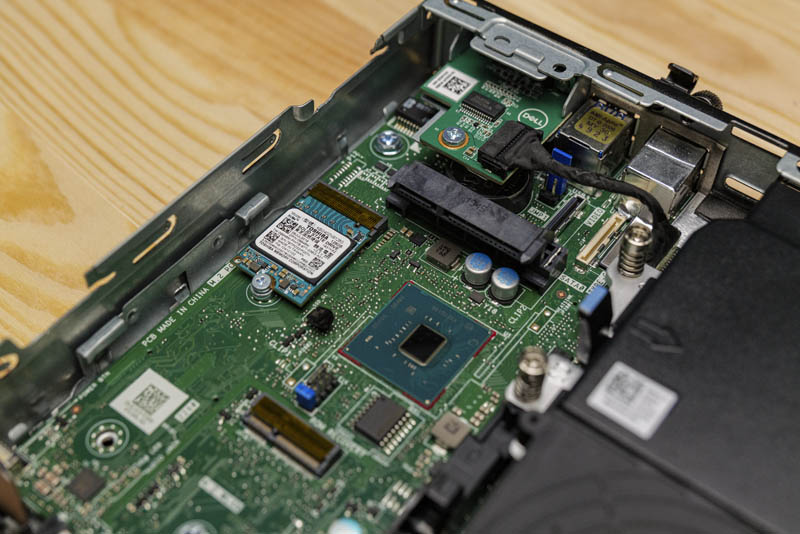
To round out the configuration, we would, at a minimum add a $25 extra 8GB SODIMM to hit 16GB. We would also grab a 256-512GB SATA SSD for $50-60 or just replace the 128GB NVMe SSD with a larger unit.
We are going to go into the hardware overview, then into the key specs. We are then going to talk a bit about performance and power consumption before getting to our lessons learned from these units and our final words.
Dell OptiPlex 7070 Micro Hardware Overview
The chassis itself is a fairly standard design for the OptiPlex Micro series. It measures 178 x 182 x 36mm (7.0 x 7.2 x 1.4in) which puts it just over 1.1L in displacement.
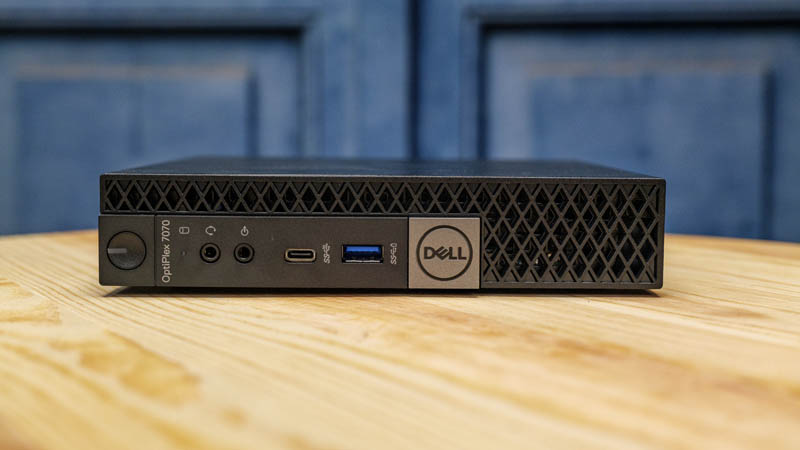
In the front of the chassis, we get headphone/ mic jacks as well as two USB ports. One is a USB 3.1 Gen1 Type-A port and the other is a USB 3.1 Gen2 Type-C port that allows for 10Gbps devices to be connected. For a bit of comparison here, the Project TinyMiniMicro Dell OptiPlex 3070 Micro we reviewed had two Type-A ports.
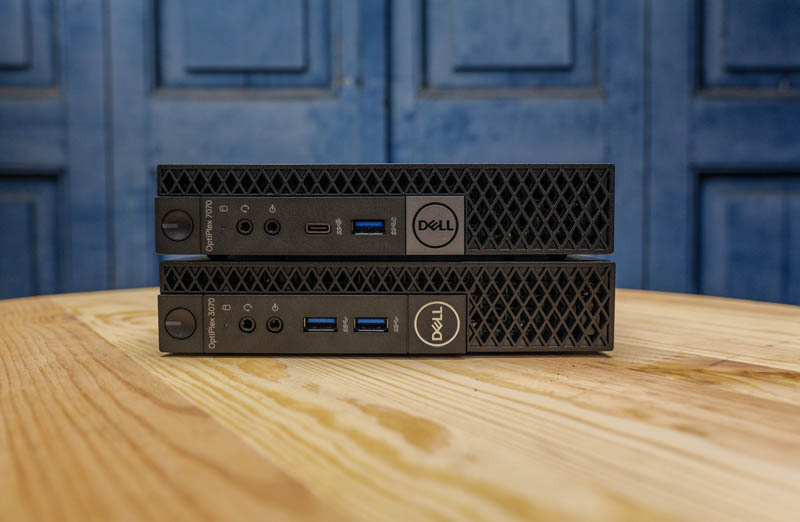
On the rear of the unit, one gets two DisplayPort headers as standard. There is an optional slot above the NIC where ours has a serial console port. That spot can also be blank, VGA, DP, or HDMI. The NIC is an Intel i219LM instead of a Realtek unit on the lower-end system. This is required to support vPro. We also have four USB Type-A ports. Two are Gen1 and two are Gen2.
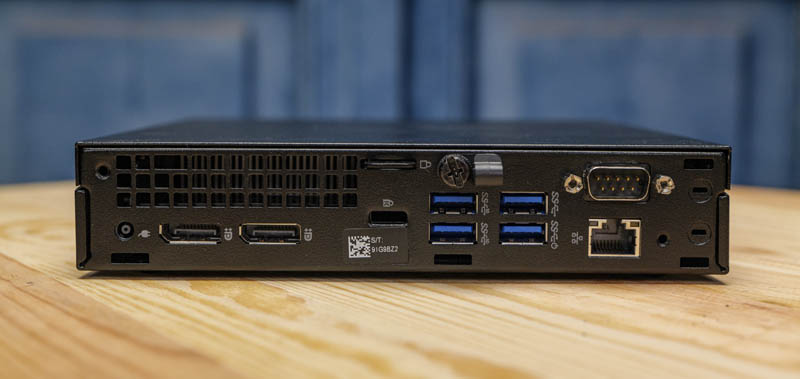
The OptiPlex 3070 Micro, in contrast, only had two USB 3.0 and two USB 2.0 ports. It also had a HDMI port instead of a DisplayPort. There are quite a few differences in terms of connectivity.
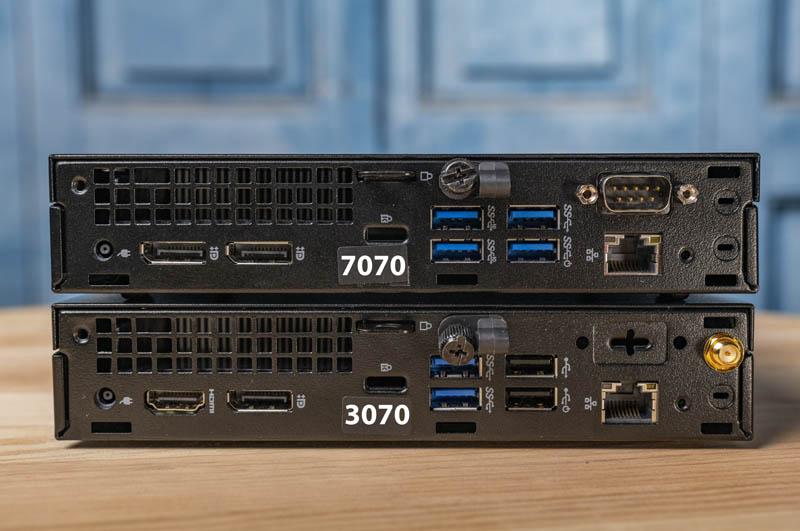
Opening the system is done via a single thumbscrew. You can tell that this is a really well-designed system because that thumbscrew is retained on the chassis, there is no losing it. The fit and finish for the OptiPlex Micros are excellent with very smooth open/ close.
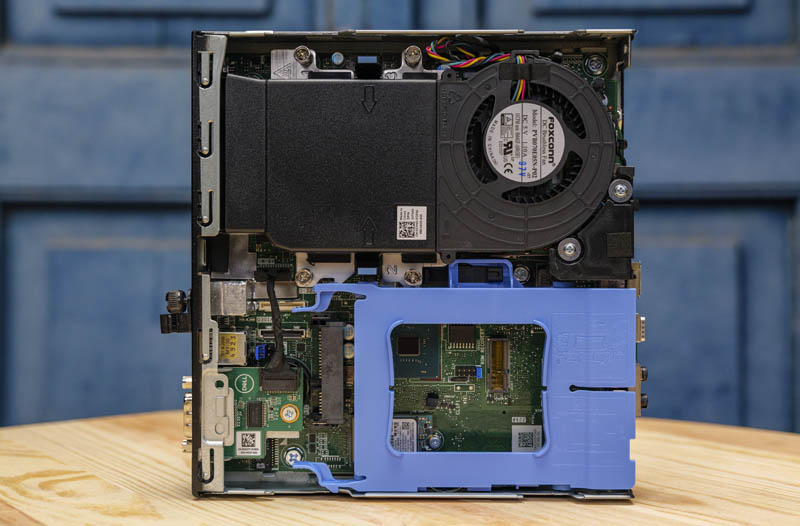
Inside the system, we see a really nice layout. There is a 2.5″ drive tray system. This can be removed via a tool-less mechanism simply by using latches. Drive installation is tool-less which is a big upgrade over other systems we have seen. Another small feature that is really nice is that the SATA data and power connector is hard mounted in the system. Some of the other systems we have looked at from HP and Lenovo use a cabled system and Dell’s mounting option is more robust.
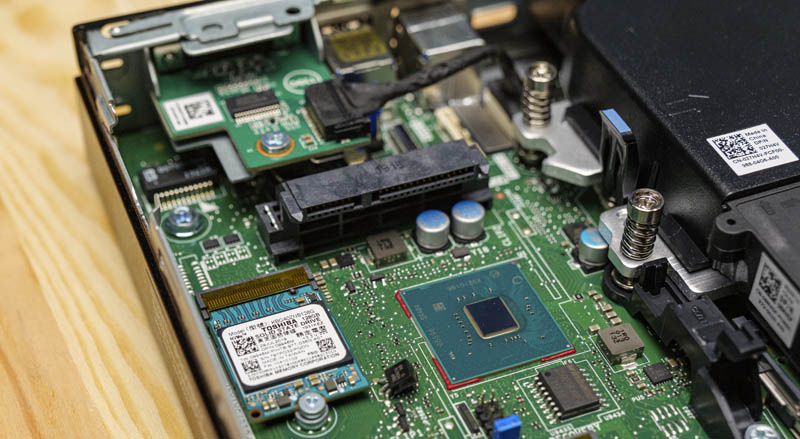
The other storage option is a PCIe x4 NVMe SSD slot. In ours we have a Toshiba BG4 NVMe SSD. This is a low-cost, low capacity, DRAM-less, and lower performance option. It works for a client that is going to store data on a file server such as a NAS, but it is far from ideal if one wants a lot of high-speed local storage.
There is also a M.2 2230 slot that is usually reserved for WiFi. On these, you will likely find a Qualcomm or an Intel 802.11ac WiFi + Bluetooth unit if they are installed. If not, this slot will be open as it is in our system. This was not a standard feature.
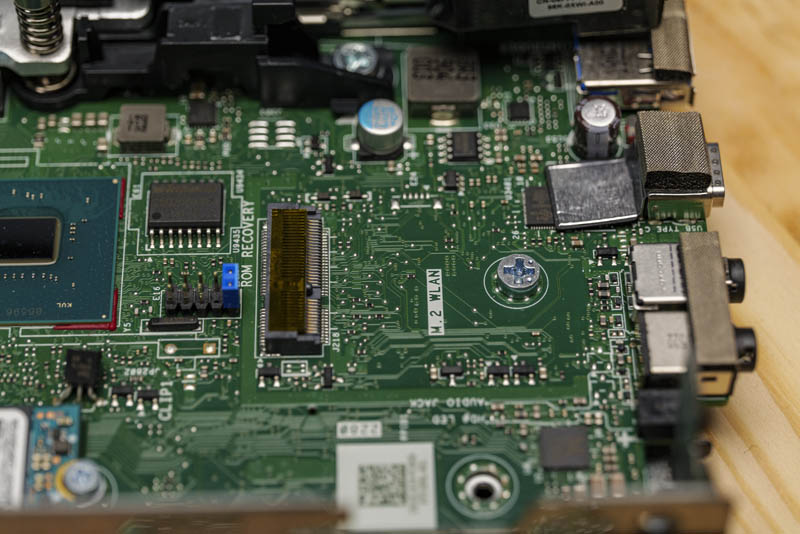
We recently saw in our HP EliteDesk 705 G4 Mini AMD Ryzen-based Project TMM Guide that although the system did not come with WiFi, the chassis was wired for it. That is an awesome feature. Dell does not use the same complex under-PCB mounting that would make this required, but this system was also not pre-wired for the optional and not present feature. While Dell’s decision makes sense, that made the HP easier to upgrade.
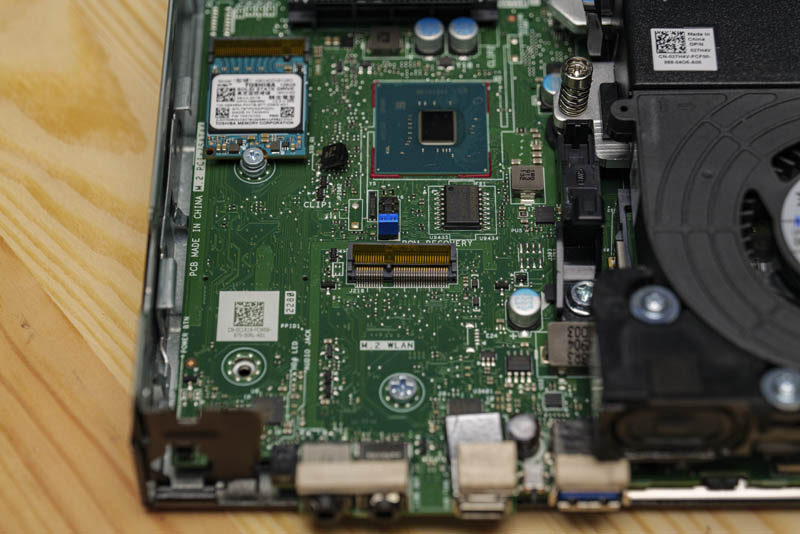
The OptiPlex 7070 Micro uses the Intel Q370 chipset, so it can support vPro if that option is enabled.
The other side of the system has a tool-less CPU and memory shroud that reveals two DDR4 SODIMM slots. These take DDR4-2400/2666 SODIMMs which are inexpensive. Our unit came with a single DDR4-2666 DIMM. You will want two DIMMs here to achieve full memory bandwidth.
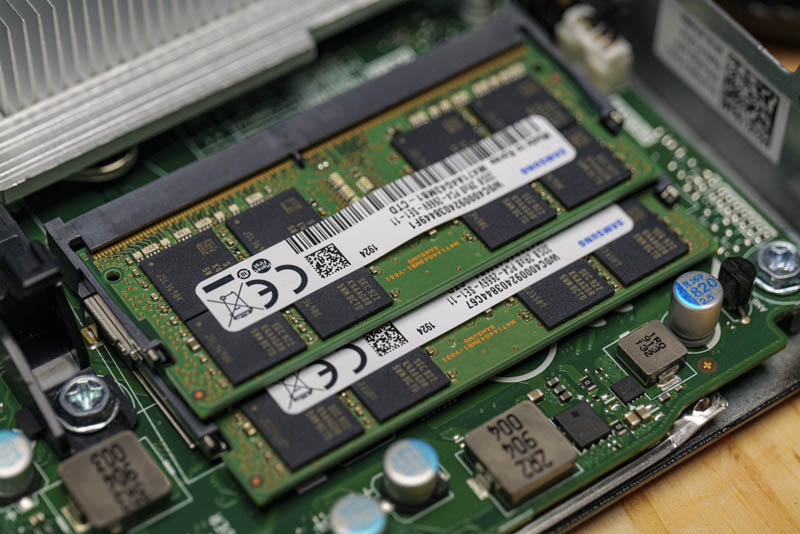
Something that we tried in this system was to add two 32GB Samsung SODIMMs. That gave us 2x 32GB or 64GB of memory in the system. Although this is not a supported configuration, it is great. We think this would be an awesome upgrade for the Core i7 8-core model.
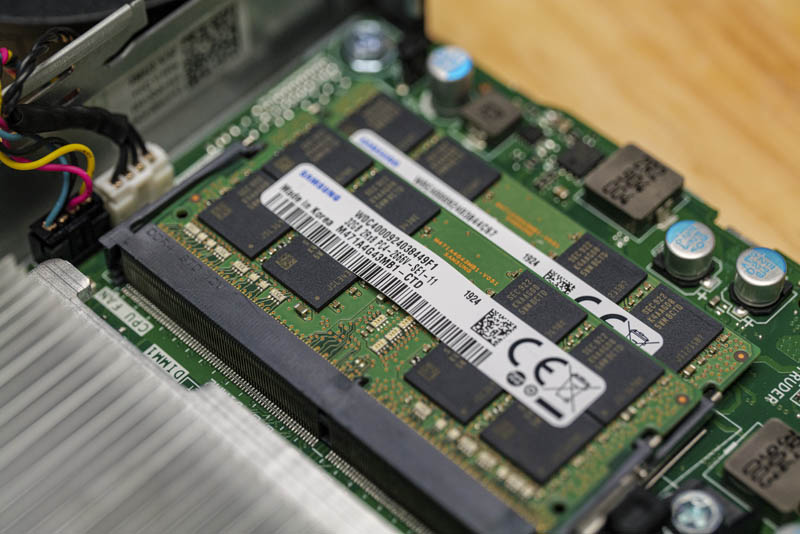
The CPU socket is one of the only components you need a screwdriver to access. Underneath, you can find an Intel LGA1151 socket designed for low-TDP parts. In our case, we had an Intel Core i5-9500T which is a 35W 6C/ 6T processor. In the Core i5-7000 generation, we saw 4C/ 4T parts, but the newer Core i5-10000 generation adds Hyper-Threading. Perhaps the most interesting option, and not the one we got, is the Core i7-9700T which offers one of the few 8C options in this ~1L form factor.
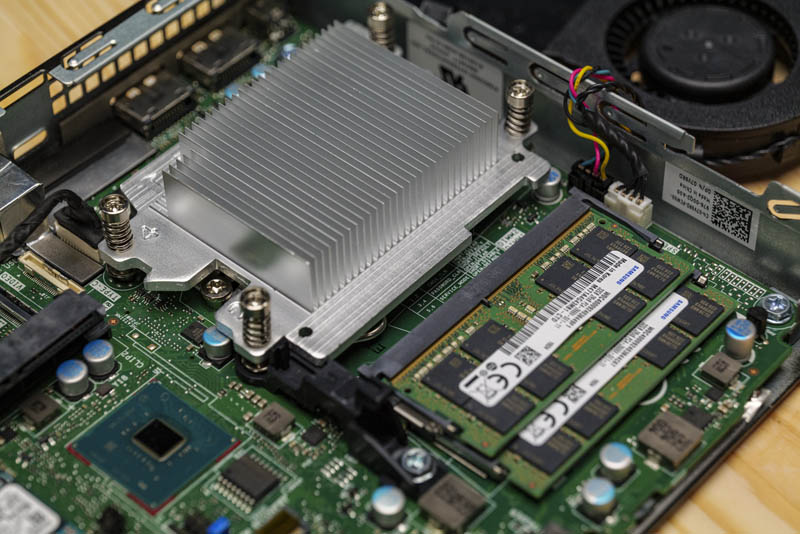
Overall, this is a great hardware package. Dell does a great job of retaining both configuration flexibility as well as serviceability. There are small touches like the 2.5″ SATA drive solution that is clearly class-leading now that we have looked at almost two dozen systems.
Next, we are going to look at the key specs we have been able to pull from a number of different sources to get you some idea of what to expect in terms of configuration diversity. We are then going to get to performance and power consumption.

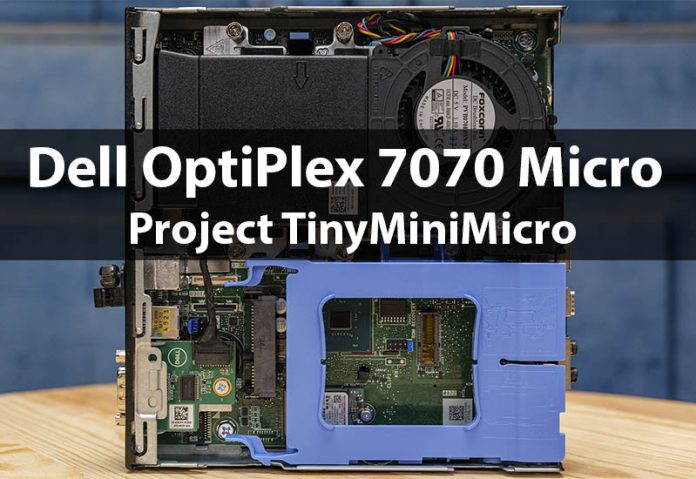


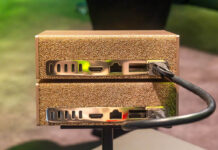
I find it interesting that the system wouldn’t boot with the 60W power supply. Is this because the voltage actually dropped below acceptable levels during the boot or because there is some sort of inkjet-printer-cartridge-like cryptographic coding going on to make sure only the correct Dell power supplies are used?
speedbal – Coming.
Eric – It boots, but it initially throws a stop and says it will run in lower performance mode.
Over priced and under powered. Much cheaper to build a mini amd machine. I also notice you didnt throw any real ryzens into your comparisons. Also, pushing this machine makes me question your integrity.
dorian they’re doing this as a series and did two Ryzen 2200GE systems from Lenovo and HP already. It’s like one a week. You aren’t going to build a silent Ryzen PC this size for this price. That’s the point of the series. We have 1000s of these at work. They’re great
Just grabbed 4 of these off eBay because you tested it with 64GB… Just what I needed!!!! Thanks!
Nate77 what kind of industry uses 1000s of these?
These systems are great, but have one huge shortcoming: no HHHL PCIe slot in place of the obsolete hdd slot. I’m sure it’s doable with a small fan at the very bottom.
Also: why can you put one or two M.2 NVMe drives, pulling up to 6/7W but not a 10Gbit ethernet with about the same TDP?
Hello, I think you are mistaken about the 8C/16T spec, the i7-9700T spec says no HyperThreading and thus only 8 cores / 8 threads.
It still seems a great spec for my mini desktop PC needs. Since the SSD is cheap and low-capacity I guess I’ll buy one separately. Thanks for the review. I’m expecting the SATA HDD to be higher-end since it’s from the small business Optiplex line.
I’ve been following your guides to mini/micro system. I ended up getting an inexpensive Optiplex 5050 with the i5-7600T processor. I’m going to use this for home applications (no gaming).
Mine comes with a 2.5 SSD and I’m wondering if you can share your recommendation for a PCIe SSD? I’m guessing I need at least a 512gb drive. If would be nice to have it as the bootable drive. It’s hard to make heads or tails from many of the manufacturer’s site.
Thank you
Hey Patrick,
I have an Optiplex 7070 micro with me and I am thinking to upgrade the machine by adding a graphics card. As it is a micro PC, I am not sure which graphics card will fit in or be compatible with the machine. Can you please suggest me a graphics card that goes with the Optiplex 7070 micro and also tell me the power supply requirements for the PC with a graphics card?
You cannot add a dedicated graphics card with most of these micro PCs. The only micro PC off my head that can add a very limited range of dedicated graphics cards is the Lenovo P320 ThinkStation series !
I find it weird that none of these micro’s offer USB C Alt DisplayPort. Maybe the modern ones do, or USB4 or Thunderbolt 3 or 4. It’s quite common on laptops from the same generation. You wanna be able to just connect these straight to a USB C Alt DisplayPort/Thunderbolt Monitor, one cable does it all. I have very nice Lenovo M14t portable Touch Screen Monitors that will only connect through USB C Alt DisplayPort or Thunderbolt 3 or 4, that’s why I’m so interested in finding one that supports it.